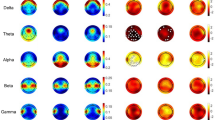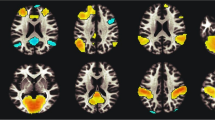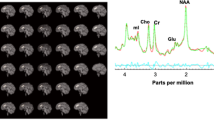Abstract
Smoking is usually initiated in adolescence, and is the leading preventable cause of death in the United States. Little is known, however, about the links between smoking and neurobiological function in adolescent smokers. This study aimed to probe prefrontal cortical function in late adolescent smokers, using a response inhibition task, and to assess possible relationships between inhibition-related brain activity, clinical features of smoking behavior, and exposure to cigarette smoking. Participants in this study were otherwise healthy late adolescent smokers (15–21 years of age; n=25), who reported daily smoking for at least the 6 months before testing, and age- and education-matched nonsmokers (16–21 years of age; n=25), who each reported smoking fewer than five cigarettes in their lifetimes. The subjects performed the Stop-signal Task, while undergoing functional magnetic resonance imaging. There were no significant group differences in prefrontal cortical activity during response inhibition, but the Heaviness of Smoking Index, a measure of smoking behavior and dependence, was negatively related to neural function in cortical regions of the smokers. These findings suggest that smoking can modulate prefrontal cortical function. Given the late development of the prefrontal cortex, which continues through adolescence, it is possible that smoking may influence the trajectory of brain development during this critical developmental period.
Similar content being viewed by others
Log in or create a free account to read this content
Gain free access to this article, as well as selected content from this journal and more on nature.com
or
References
Aron AR, Poldrack RA (2006). Cortical and subcortical contributions to stop signal response inhibition: role of the subthalamic nucleus. J Neurosci 26: 2424–2433.
Azizian A, Montetosso J, O’Neill J, London ED (2009). Magnetic resonance imaging studies of cigarette smoking. In: Henningfield JE (ed). Nicotine Psychopharmacology Handbook of Experimental Pharmacology. Springer-Verlag: Berlin Heidelberg. pp 113–143.
Azizian A, Nestor LJ, Payer D, Monterosso JR, Brody AL, London ED (2010). Smoking reduces conflict-related anterior cingulate activity in abstinent cigarette smokers performing a Stroop task. Neuropsychopharmacology 35: 775–782.
Beckmann CF, Smith SM (2004). Probabilistic independent component analysis for functional magnetic resonance imaging. IEEE Trans Med Imaging 23: 137–152.
Borland R, Yong HH, O’Connor RJ, Hyland A, Thompson ME (2010). The reliability and predictive validity of the Heaviness of Smoking Index and its two components: findings from the International Tobacco Control Four Country study. Nicotine Tob Res 12 (Suppl): S45–S50.
Brown TT, Lugar HM, Coalson RS, Miezin FM, Petersen SE, Schlaggar BL (2005). Developmental changes in human cerebral functional organization for word generation. Cereb Cortex 15: 275–290.
Center for Disease Control and Prevention (2008). Cigarette smoking among adults—United States, 2006. MMWR Morbidity and Mortality Weekly Report 56: 1157–1161.
Chen H, Matta SG, Sharp BM (2007). Acquisition of nicotine self-administration in adolescent rats given prolonged access to the drug. Neuropsychopharmacology 32: 700–709.
Chikazoe J, Jimura K, Hirose S, Yamashita K, Miyashita Y, Konishi S (2009). Preparation to inhibit a response complements response inhibition during performance of a stop-signal task. J Neurosci 29: 15870–15877.
Congdon E, Mumford J, Cohen J, Galván A, Aron A, Xue G et al (2010). Engagement of large-scale networks is related to individual differences in inhibitory control. NeuroImage 53: 653–663.
Counett D, Spijker S, Van de Burgwal L, Hogenboom F, Schoffelmeer A, DeVries T et al (2009). Long-lasting cognitive deficits resulting from adolescent nicotine exposure in rats. Neuropsychopharmacology 34: 299–306.
Courvoiser D, Etter J (2010). Comparing the predictive validity of five cigarette dependence questionnaires. Drug Alcohol Depend 107: 128–133.
Curry SJ, Mermelstein RJ, Sporer AK (2009). Therapy for specific problems: youth tobacco cessation. Annu Rev Psychol 60: 229–255.
Dinn WM, Aycicegi A, Harris CL (2004). Cigarette smoking in a student sample: neurocognitive and clinical correlates. Addict Behav 29: 107–126.
Dorn L, Dahl RE, Woodward H, Biro F (2006). Defining the boundaries of early adolescence: a users’ guide to assessing pubertal status and pubertal timing in research with adolescents. App Dev Sci 10: 30–56.
Duann JR, Ide JS, Luo X, Li CSR (2009). Functional connectivity delineates distinct roles of the inferior frontal cortex and presupplementary motor area in stop signal inhibition. J Neurosci 29: 10171–10179.
Durston S, Davidson MC, Tottenham N, Galvan A, Spicer J, Fossella J et al (2006). A shift from diffuse to focal cortical activity with development. Dev Sci 9: 1–8.
Dwyer JB, McQuown SC, Leslie FM (2009). The dynamic effects of nicotine on the developing brain. Pharmacol Ther 122: 125–139.
Ernst M, Luckenbaugh DA, Moolchan ET, Temple VA, Jenness J, Korelitz KE et al. (2009a). Decision-making and facial emotion recognition as predictors of substance-use initiation among adolescents. Addict Behav 35: 286–289.
Ernst M, Romeo RD, Andersen SL (2009b). Neurobiology of the development of motivated behaviors in adolescence: a window into a neural systems model. Pharmacol Biochem Behav 93: 199–211.
Etter J (2008). Comparing the validity of the cigarette dependence scale and the fagerstrőm test for nicotine dependence. Drug Alcohol Depend 95: 152–159.
Etter JF, Le Houezec J, Perneger T (2003). A self-administered questionnaire to measure dependence on cigarettes: the cigarette dependence scale. Neuropsychopharmacology 28: 359–370.
Fagerström KO, Schneider NG (1989). Measuring nicotine dependence: a review of the Fagerström Tolerance Questionnaire. J Behav Med 12: 159–182.
Fountain S, Rowan J, Kelley B, Willey A, Nolley E (2008). Adolescent exposure to nicotine impairs adult serial pattern learning in rats. Exp Brain Res 187: 651–656.
Galván A (2010). Adolescent development of the reward system. Front Hum Neurosci 4: 1–9.
Galván A, Hare TA, Parra CE, Penn J, Voss H, Glover G et al (2006). Earlier development of the accumbens relative to orbitofrontal cortex might underlie risk-taking behavior in adolescents. J Neurosci 26: 6885–6892.
Giedd JN, Rapoport J (2010). Structural MRI of pediatric brain development: What have we learned and where are we going? Neuron 67: 728–734.
Hughes JR, Hatsukami DK (2003). Minnesota Withdrawal Scale. Retrieved from http://www.uvm.edu/~hbpl/minnesota/2005/Behavior%20Rating%20Scale%20-%20Self%20Report.pdf (Last accessed 16 August 2010).
Isaka Y, Ashida K, Imaizumi M, Abe H (1993). Effect of chronic smoking on regional cerebral blood flow in asymptomatic individuals. Yakubutsu Seishin Kodo 13: 191–198.
Jacobsen LK, Gore JC, Skudlarski P, Lacadie CM, Jatlow P, Krystal JH (2002). Impact of intravenous nicotine on BOLD signal response to photic stimulation. Magn Reson Imaging 20: 141–145.
Jacobsen LK, Mencl W, Constable R, Westerveld M, Pugh K (2007). Impact of smoking abstinence on working memory neurocircuitry in adolescent daily tobacco smokers. Psychopharmacology 193: 557–566.
Jacobsen LK, Picciotto M, Heath C, Mencl W, Gelernter J (2009). Allelic variation of calsyntenin 2 (CLSTN2) modulates the impact of developmental tobacco smoke exposure on mnemonic processing in adolescents. Biol Psychiatry 65: 671–679.
Jacobus J, McQueeny T, Bava S, Schwiensburg BC, Frank LR, Yang TT et al (2009). White matter integrity in adolescents with histories of marijuana use and binge drinking. Neurotoxicol Teratol 31: 349–355.
Jarvik ME, Madsen DC, Olmstead RE, Iwamoto-Schaap PN, Elins JL, Benowitz NL (2000). Nicotine blood levels and subjective craving for cigarettes. Pharmacol Biochem Behav 66: 553–558.
Jenkinson M, Bannister P, Brady M, Smith S (2002). Improved optimization for the robust and accurate linear registration and motion correction of brain images. NeuroImage 17: 825–841.
Kubota K, Yamaguchi T, Abe Y, Fujiwara T, Hatazawa J, Matsuzawa T (1983). Effects of smoking on regional cerebral blood flow in neurologically normal subjects. Stroke 14: 720–724.
Levin ED, Lawrence SS, Petro A, Horton K, Rezvani AH, Seidler FJ et al (2007). Adolescent vs adult-onset nicotine self-administration in male rats: duration of effect and differential nicotinic receptor correlates. Neurotoxicol Teratol 29: 458–465.
Levin J, Frederick BB, Ross M, Fox J, von Rosenberg H, Kaufman M et al (2001). Influence of baseline hematocrit and hemodilution on BOLD fMRI activation. Magn Reson Imaging 19: 1055–1062.
Li CS, Huang C, Constable RT, Sinha R (2006). Imaging response inhibition in a stop-signal task: neural correlates independent of signal monitoring and post-response processing. J Neurosci 26: 186–192.
Logan GD (1994). On the ability to inhibit thought and action: a users’ guide to the stop-signal paradigm. In: Dagenbach D, Carr TH (eds). Inhibitory Processes in Attention, Memory and Language. Academic Press: San Diego, pp 214–249.
Mathers M, Toumbourou J, Catalano R, Williams J, Patton G (2006). Consequences of youth tobacco use: a review of prospective behavioral studies. Addiction 101: 948–958.
McBride D, Barrett S, Kelly J, Aw A, Dagher A (2006). Effects of expectancy and abstinence on the neural responses to smoking cues in cigarette smokers: an fMRI study. Neuropsychopharmacology 31: 2728–2738.
McNamee RL, Dunfee KL, Luna B, Clark DB, Eddy WF, Tarter RE (2008). Brain activation, response inhibition, and increased risk for substance use disorder. Alcohol Clin Exp Res 32: 405–413.
Medina KL, McQueeny T, Nagel BJ, Hanson KL, Scheweinsburg AD, Tapert SF (2008). Prefrontal cortex volumes in adolescents with alcohol use disorders: unique gender effects. Alcohol Clin Exp Res 32: 386–394.
Mendrek A, Monterosso J, Simon S, Jarvik M, Brody AL, Olmstead R et al (2006). Working memory in cigarette smokers: comparison to non-smokers and effects of abstinence. Addict Behav 31: 833–844.
Monterosso JR, Aron AR, Cordova X, Xu J, London ED (2005). Deficits in response inhibition associated with chronic methamphetamine abuse. Drug Alcohol Depend 79: 273–277.
Rose JE, Behm FM, Salley AN, Bates JE, Coleman RE, Hawk TC et al (2007). Regional brain activity correlates of nicotine dependence. Neuropsychopharmacology 32: 2441–2452.
Schochet T, Kelley A, Landry C (2005). Differential expression of arc mRNA and other plasticity-related genes induced by nicotine in adolescent rat forebrain. Neuroscience 135: 285–297.
Schweinsburg A, Paulus M, Bartlett V, Killeen L, Caldwell L, Pulido C et al. (2004). An fMRI study of response inhibition in youths with a family history of alcoholism. Ann NY Acad Sci 1021: 391–394.
Shearman E, Fallon S, Sershen H, Lajtha A (2008). Nicotine-induced monoamine neurotransmitter changes in the brain of young rats. Brain Res Bull 76: 626–639.
Shram MJ, Funk D, Li Z, Lê AD (2006). Periadolescent and adult rats respond differently in tests measuring the rewarding and aversive effects of nicotine. Psychopharmacology (Berl) 186: 201–208.
Somerville LH, Casey B (2010). Developmental neurobiology of cognitive control and motivational systems. Curr Opin Neurobiol 20: 236–241.
Squeglia LM, Jacobus J, Tapert SF (2009). The influence of substance use on adolescent brain development. Clin EEG Neurosci 40: 31–38.
Sweet LH, Mulligan RC, Finnerty CE, Jerskey BA, David SP, Cohen RA et al (2010). Effects of nicotine withdrawal on verbal working memory and associated brain response. Psychiatry Res 183: 69–74.
Sussman S (2002). Effects of sixty-six adolescent tobacco use cessation trials and seventeen prospective studies of self initiated quitting. Tob Induc Dis 1: 35–81.
Tapert S, Schweinsburg A, Drummond S, Paulus M, Brown S, Yang T et al (2007). Functional MRI of inhibitory processing in abstinent adolescent marijuana users. Psychopharmacology (Berl) 194: 173—83.
Torres OV, Tejeda HA, Natividad LA, O′Dell LE. (2008). Enhanced vulnerability to the rewarding effects of nicotine during the adolescent period of development. Pharmacol Biochem Behav 90: 658–663.
Velanova K, Wheeler ME, Luna B (2008). Maturational changes in anterior cingulated and frontoparietal recruitment support the development of error processing and inhibitory control. Cereb Cortex 18: 2505–2522.
Woolrich M (2008). Robust group analysis using outlier inference. NeuroImage 41: 286–301.
Xu J, Mendrek A, Cohen M, Monterosso J, Rodriguez P, Simon S et al (2005). Brain activity in cigarette smokers performing a working memory task: effect of smoking abstinence. Biol Psychiatry 58: 143–150.
Xu J, Mendrek A, Cohen M, Monterosso J, Simon S, Jarvik M et al (2007). Effect of cigarette smoking on prefrontal cortical function in nondeprived smokers performing the Stroop Task. Neuropsychopharmacology 32: 1421–1428.
Acknowledgements
The research described in this article was funded, in part, by a grant from Philip Morris USA. Additional funding was provided by an endowment from the Thomas P and Katherine K Pike Chair in Addiction Studies and a gift from the Marjorie M Greene Trust. None of the sponsors had any involvement with the design, collection, analysis, or interpretation of data, writing the manuscript, or the decision to submit the manuscript for publication.
Author information
Authors and Affiliations
Corresponding author
Additional information
Dicslosure
Research support was supplied to Dr London by Philip Morris USA under UCLA contract (number 20063287). Philip Morris USA did not have any input on the design of the studies, data analysis, or interpretation. None of the other authors have any conflicts of interest or financial disclosures to report.
Dr Adriana Galván, Principal Investigator, takes responsibility for the integrity of the data and the accuracy of the data analysis. All of the authors had full access to all the data in the study.
Supplementary Information accompanies the paper on the Neuropsychopharmacology website
Supplementary information
Rights and permissions
About this article
Cite this article
Galván, A., Poldrack, R., Baker, C. et al. Neural Correlates of Response Inhibition and Cigarette Smoking in Late Adolescence. Neuropsychopharmacol 36, 970–978 (2011). https://doi.org/10.1038/npp.2010.235
Received:
Revised:
Accepted:
Published:
Issue date:
DOI: https://doi.org/10.1038/npp.2010.235
Keywords
This article is cited by
-
Nicotine in action: cigarette smoking modulated homotopic functional connectivity in schizophrenia
Brain Imaging and Behavior (2019)
-
Decreased cortical and subcortical response to inhibition control after sleep deprivation
Brain Imaging and Behavior (2019)
-
Striato-cortical tracts predict 12-h abstinence-induced lapse in smokers
Neuropsychopharmacology (2018)
-
The neural mechanism underpinning balance calibration between action inhibition and activation initiated by reward motivation
Scientific Reports (2017)
-
Neural correlates of 12-h abstinence-induced craving in young adult smokers: a resting-state study
Brain Imaging and Behavior (2017)



